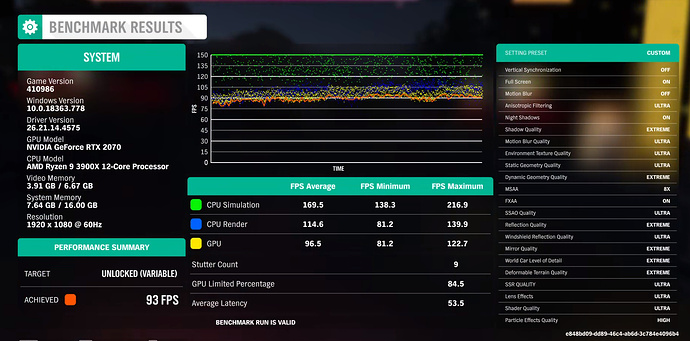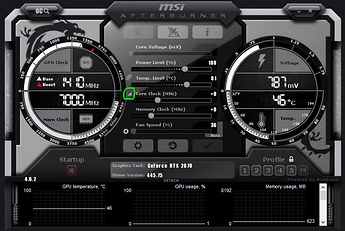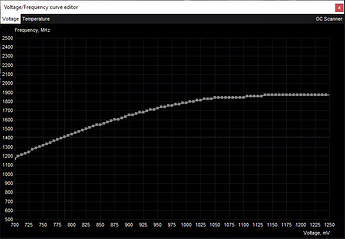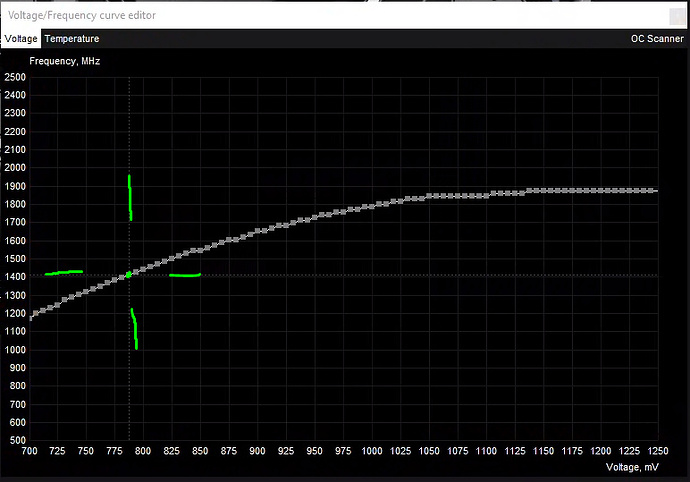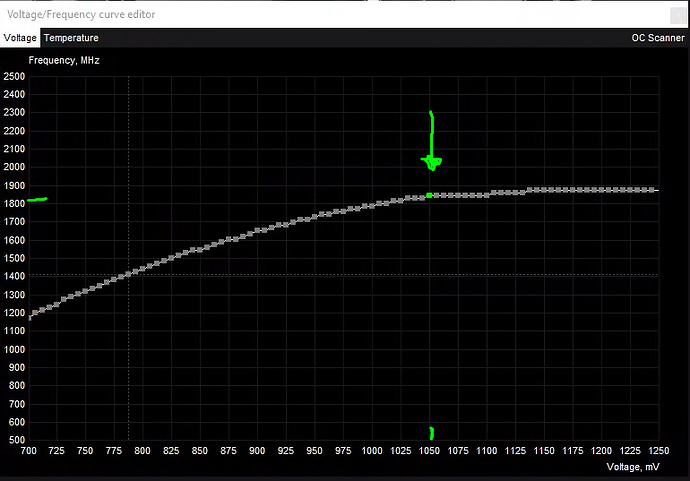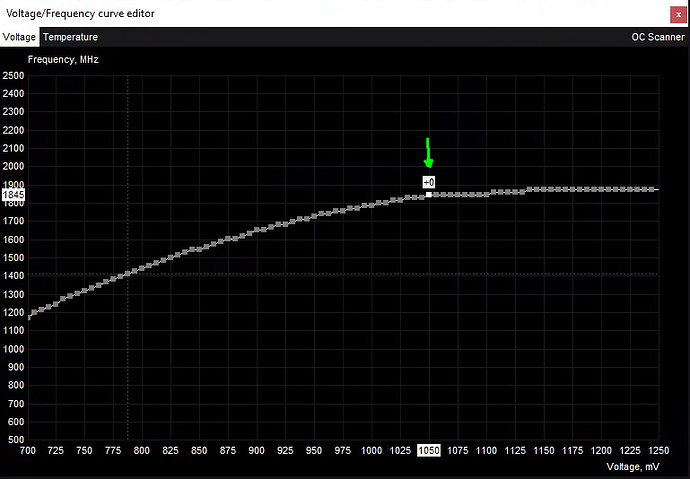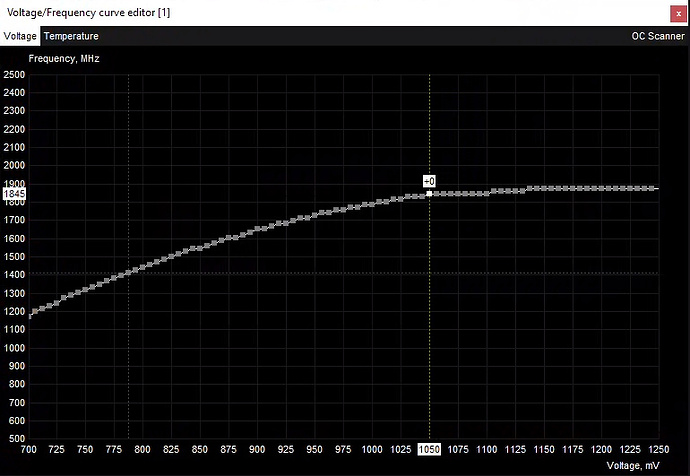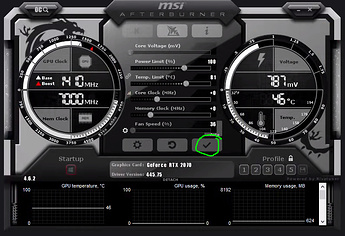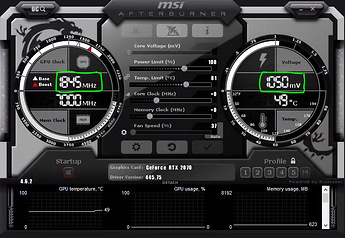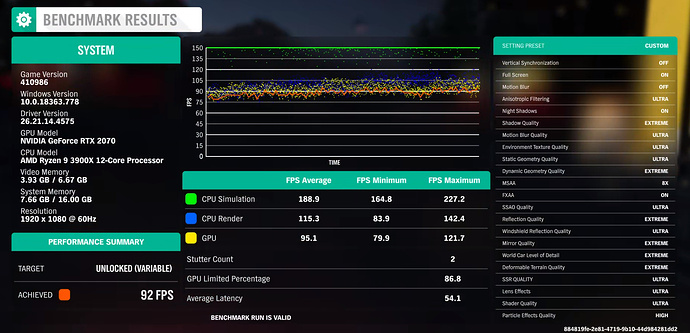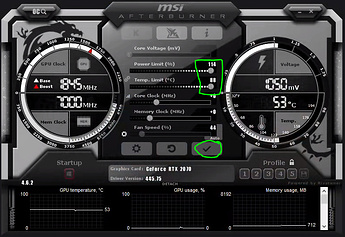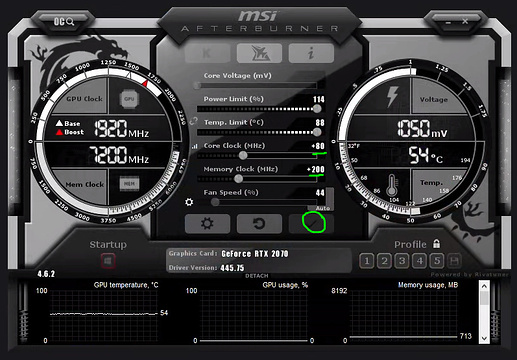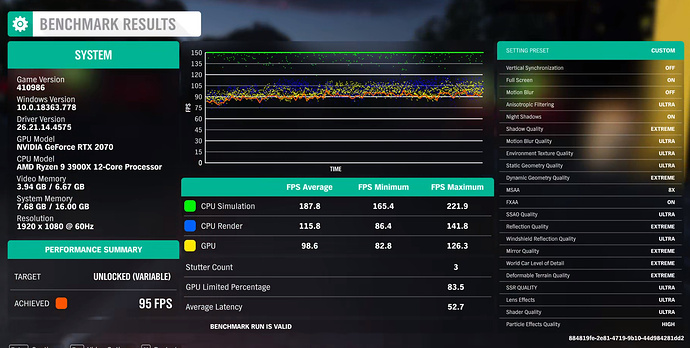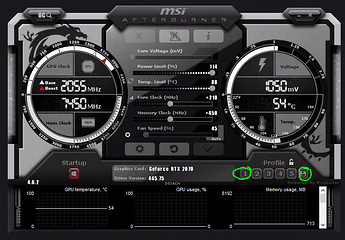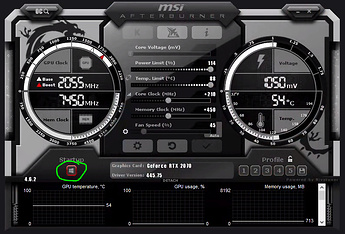5. Overclocking your GPU
Your specific GPU settings will be different than what is outlined in this guide.
You are the one responsible for your individual GPU settings, not me.
Follow along with the guide and use the general advice given, in addition to your own research to OC your GPU.
Instead of simply adjusting the core and memory offsets, we are going to use a stricter method for overclocking.
This method ensures that the GPU does not auto-modulate voltage and frequency.
Locking the voltage and frequency helps to prevent frame skips, drops, and stuttering.
Before any of the steps below, I recommend running a benchmark.
For this guide, I will be using Forza Horizon 4’s built in benchmark tool at Ultra settings on 1080p with AA maxed.
This will set a baseline for comparison.
1. Stock Benchmark Results (click me)
- “Stutter Count” seems high, so we’ll take note of that for future runs.
This is a raw count of the number of frame stutters and dips experienced in the benchmark. - “GPU Limited Percentage” is the amount of time where the GPU was the limiting factor when rendering frames. A higher percentage indicates a GPU bottleneck, a lower percentage indicates a CPU bottleneck.
This guide will aim to lower this percentage.
[details = 2. Force your GPU’s Voltage & Frequency (click me)]
Locking the Voltage and Frequency will show an improvement on its own, especially with stuttering and minimum frames. If you don’t feel like extracting even more performance out of your card, you can stop here at the end of step 1.
- Click the graph icon next to “Core Clock (MHz)” or press
CTRL+F
- You will see this window appear.
- We will only need to use the voltage tab, so don’t click off of that.
This is the default Voltage and Frequency plot for your GPU. As more demand is placed on the GPU, it will dynamically increase Voltage and Frequency. The problem is that game do not have a consistent workload, causing the Voltage and Frequency to jump around very quickly. This can cause a number of performance issues.
The intersecting grey lines are the current Voltage and Frequency.
- Look for where the curve starts to flatten out. For my RTX 2070, this is at
1050 mVand about1850 MHz. This is where we will lock the card’s voltage. It’s a good starting point, you can always increase or decrease this later.
1.Click on that point (without clicking and dragging it)
Make sure the point’s value says+0when the point is selected.
If it doesn’t, use the arrow keys on your keyboard to adjust the value until it is+0.
l - Press the
Lkey on your keyboard.
A yellow line will appear.
You have now forced your GPU to use this Voltage and Frequency.
- Click the “X” button on the graph.
- Before going any further, apply your settings.
Get used to doing this after every step.
- Inspect your work
Notice the Core Clock and Voltage displays have changed to your settings.
- With that complete, run the benchmark again.
[/details]
3. Locked Voltage and Frequency Benchmark Results (click me)
Overall performance is marginally lower than a stock card, however stutter count is much lower. This indicates that while the card was dynamically turbo boosting higher than our current settings, performance is now much more consistent while only losing about 1 FPS on average.
4. Apply an Overclock (click me)
It’s time to get even more performance from the card now that we have locked it down.
- Start by maxing out your Power Limit and Temp Limit.
These are just limits. This will allow your card to maintain clock speed under a variety of workloads.
Make sure to apply your settings.
- For your first overclock, start with +80 MHz Core and + 200 MHz Memory.
Make sure to apply your settings.
- Retest your benchmark
5. Overclocked Benchmark Results (click me)
Finally, we see a performance improvement.
- “Stutter Count” is within margin of error of the previous benchmark, but it is higher.
- “GPU Limited Percentage” dropped quite a bit as well.
- Average FPS improved.
6. More Overclocking (click me)
- Since we’re not increasing the voltage, it’s extremely unlikely to damage the card with this overclocking method.
- Use online research to determine what other GPUs of the same model are able to achieve.
Do not reference the Core clock or Memory Clock offset numbers from other users. Every card is different, so they are irrelevant.
Use the raw numbers only. - Increase Core and Memory Clocks by a small margin (something like +20/+50) and test again.
If you increase Core Clock and Memory Clock in small increments and test thoroughly between each setting, you will likely end up crashing the benchmark or blue screening at some point.
Step clocks back down, retest and make sure it’s stable.- Eventually, increasing Memory Clock will start to negatively effect your CPU Clock, stability, and game performance. For my GPU, this was around +500 MHz (7500 MHz actual).
+600 MHz caused decreased performance and stability, while stepping down to +450 MHz allowed me to continue to increase the Core Clock.
- Eventually, increasing Memory Clock will start to negatively effect your CPU Clock, stability, and game performance. For my GPU, this was around +500 MHz (7500 MHz actual).
